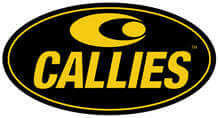
MS Access As A Dev Tool
Access continues to be a highly efficient tool for business database development.
The Best Microsoft Access Database Solutions owner, consultant, and principal programmer is Alison Balter - a recognized expert Microsoft Access consultant. Alison is the author of 15 Microsoft Access training books and videos. She is a frequent guest speaker at MS Access conferences and has developed hundreds of applications for businesses of all types.
We know your business data is important; we listen to your concerns, ask questions, and gather information from all stake holders. We discuss your needs and requirements for your database. We find out what you want, why you need various features so we can obtain as much information as possible. Once we have the information we need, we work with you to design the proper database architecture, plus the dashboards, the questions (queries), forms, and reports you need for an excellent database system.

We also create websites designed for speed to display your data accurately, using ASP.NET technology. Fast, secure, and robust, our ASP.NET web sites and web applications give you true business tool for finding and displaying information dynamically on the web.






Access continues to be a highly efficient tool for business database development.

How to create a Microsoft Access application with some unique tips and tricks.

Your Access developer near me has some great info for you about using Access efficiently.
Call MS Access Solutions at (323) 285-0939 For Complimentary Consultation
Copying Macro Actions
Macro actions can be copied within a macro or to another macro. Follow these steps to copy macro actions within a macro: 1. Click and drag to select the Macro Action Selectors of the macro actions you want to copy. 2. Click Copy in the Clipboard group on the Home tab or press Ctrl+C. 3. Click in the line above where you want the copied macro actions to be inserted. Don't click on any Macro Action Selectors unless you want to overwrite existing macro actions. 4. Click Paste in the Clipboard group on the Home tab. The macro actions you copied are inserted at the cursor.Follow these steps to copy macro actions to another macro:
1. Click and drag to select the Macro Action Selectors of the macro actions you want to copy. 2. Click Copy in the Clipboard group on the Home tab or press Ctrl+C. 3. Open the macro that will include the copied actions. 4. Click in the line above where you want the copied macro actions to be inserted. 5. Click Paste. The macro actions you copied are inserted at the cursor.Creating an Embedded Macro
Creating an embedded macro is similar to creating a standard macro. The main difference is that the macro is embedded in the object with which it is associated and does not appear in the list of macros in the Navigation Pane. Here's how to create an embedded macro: 1. In Design view, click to select the object to which you want to associate the macro (for example, a command button). 2. Open the property sheet. 3. Click the Event tab of the property sheet. 4. Click within the event to which you want to associate the embedded macro. 5. Click the build button (the ellipse). The Choose Builder dialog box appears. 6. Select Macro Builder and click OK. A Macro Design window appears. The Macro tab is labeled btnHello: On Click, indicating that the macro is associated with the On Click event of btnHello. 7. Enter the macro commands as you would for any macro. 8. Close the Macro Design window. Access prompts you to save changes to the macro and update the property. 9. Click Yes to save your changes and close the dialog box. You have now created the embedded macro.What New Features Are Available in Macros?
There are two main major improvements to Access 2007 macros. The first is the introduction of error handling, and the second is the introduction of variables. Notice the OnError macro action in Figure 7.20. The example branches to a macro named ErrorHandler in the case of an error. Unlike previous versions of Access, where error handling in macros was virtually nonexistent, the new OnError macro action provides similar error handling to that of VBA code.Another exciting addition to Access 2007 macros is the introduction of variables. The new SetTempVar macro action enables you to create a variable and assign it a value. Figure 7.21 provides an example. Notice in the figure that the macro uses the SetTempVar action to create a variable called CurrentDate and assign it the value returned from the built-in Date() function.
This material originally appeared in Alison Balter's book Mastering Microsoft Office Access 2007 Development. Reprinted here by author's permission.
When you need a Microsoft Access programmer for your Arlington VA business, call MS Access Solutions at (323) 285-0939. We have over 25 years experience in Microsoft Access programmer solutions. We create Access database applications for all sectors, consisting of hospitals, government agencies, the U.S. military, universities, agriculture, workers services, and insurance provider. We can take care of the most advanced as well as complicated Access and also SQL Server database programming for your business as well as smaller projects, like fixing damaged Access database forms, MS Access reports, Access macros, and VBA code.
More Access programmer cities we serve: Access Programmer Richmond VA

